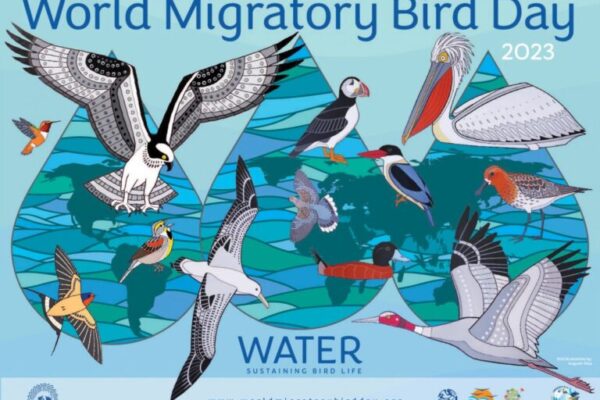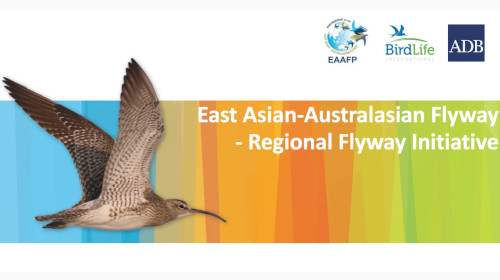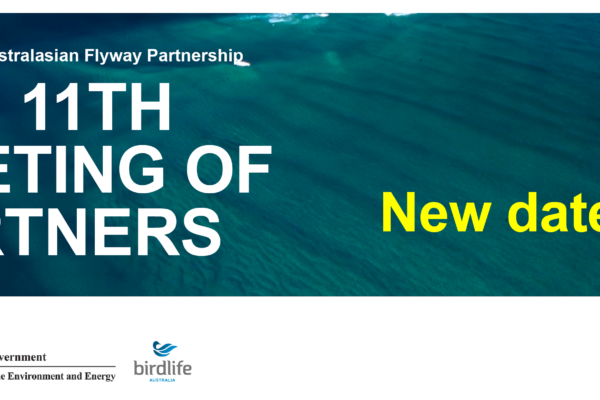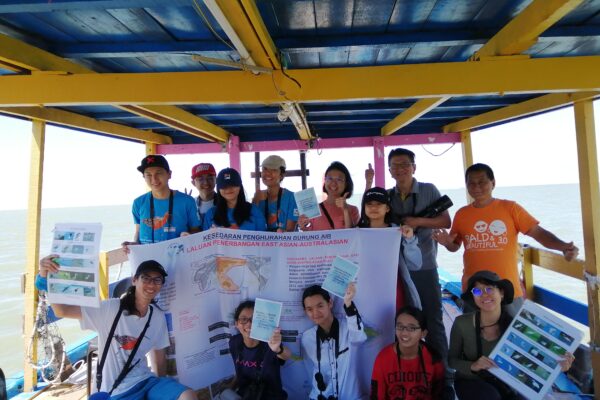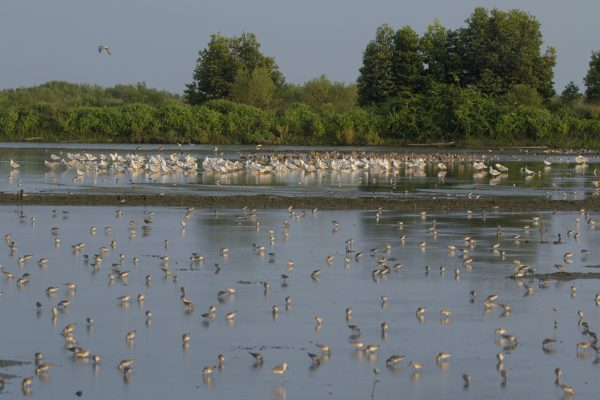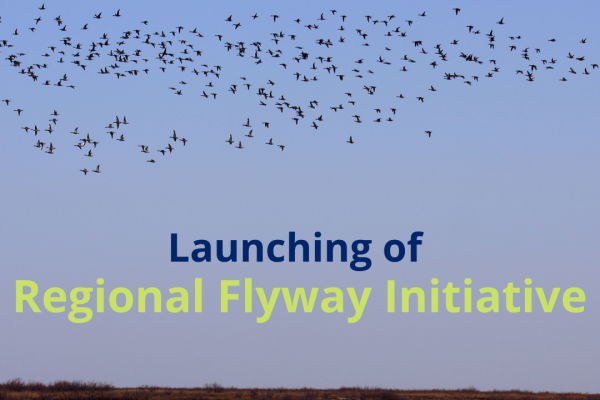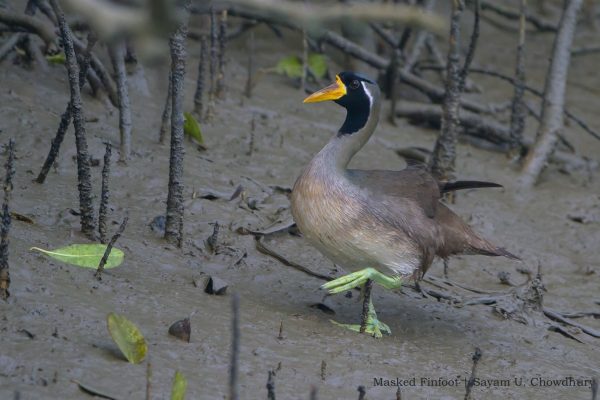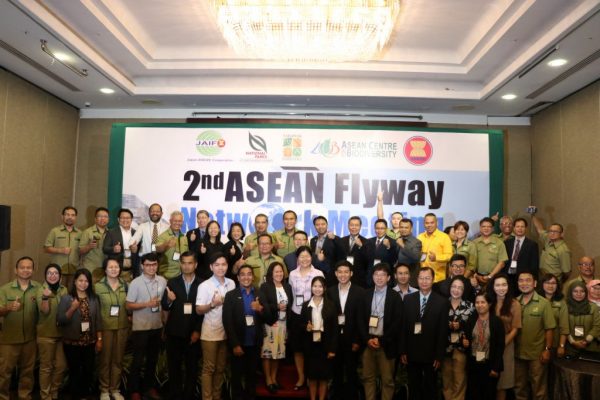-
World Migratory Bird Day 2023 highlights impact of the growing water crisis on migratory birds
BOULDER/BONN/INCHEON, 13 May 2023 – Water and its importance to migratory birds – and the increasing threats to both water quality and quantity - is the focus of this year’s World Migratory Bird Day, a global campaign that aims to raise awareness of migratory birds and the need for international cooperation to conserve them. Activities to mark the campaign will be held globally on two peak days in May and October under the theme “Water: Sustaining Bird Life” Water is fundamental to sustaining life on our planet. Migratory birds rely on water and its associated habitats—lakes, rivers, streams, ponds, swamps, marshes, and coastal wetlands—for breeding, resting, refueling during migration, and wintering. Yet increasing human demand for water, along with climate change, pollution, and other factors, are threatening these precious aquatic ecosystems. Headlines around the world are sounding alarm: 35 percent of the world’s wetlands, critical to migratory birds, have been lost in the last 50 years. Utah’s Great Salt Lake, the largest saltwater lake in the Western Hemisphere and used by more than a million shorebirds, is in danger of disappearing within five years. Across the Amur-Heilong Basin in Asia, climate change is amplifying the impact of habitat destruction by depleting natural water systems and depriving migratory birds of vital breeding and stopover site. These sobering examples go hand-in-hand with recent reports that reveal that 48 percent of bird species worldwide are undergoing population declines. Another poignant example is that of the Aral Sea shared by Kazakhstan and Uzbekistan. Once the fourth-largest lake in the world, it is widely regarded as one of the planet’s worst water-related environmental disasters. Soviet-era irrigation projects almost completely dried up the lake, which led to the loss of livelihoods for fishermen and farmers and the deterioration of public health due to toxic dust and reduced access to clean water. The impact has been severe for the communities around the lake, but also for migratory birds, which lost important food sources and a critically important stopover point on their journey. Another example is the Sahel, a vast semi-arid region in Africa: Prolonged periods of drought, deforestation, and overgrazing in the Sahel have led to the degradation of the soil and loss of vegetation, threatening the survival of both the local human population and wildlife, including migratory birds. Lake Chad, one of the largest water bodies in Africa in 1960, lost 90 % of its area, depleting water resources for local communities and also for many migratory birds. World Migratory Bird Day serves as an international call to action for the protection of migratory birds, whose ranges often span multiple countries, and are facing many different threats worldwide. The annual campaign is organized by the Convention on the Conservation of Migratory Species of Wild Animals (CMS), the African-Eurasian Migratory Waterbird Agreement (AEWA), Environment for the Americas (EFTA), and the East Asian-Australasian Flyway Partnership (EAAFP). World Migratory Bird Day 2023 will be officially held on 13 May and 14 October. The two days of World Migratory Bird Day reflect the cyclical nature of bird migration as well as the fact that there are varying peak migration periods in the northern and southern hemispheres. Events to raise awareness of migratory birds and the importance of water will take place all over the world including in local parks, nature centers, museums, libraries, schools, and other locations on these peak days and throughout the year. To learn more about this year’s World Migratory Bird Day campaign and actions to take, visit www.worldmigratorybirdday.org and EAAFP WMBD 2023 webpage: https://www.eaaflyway.net/world-migratory-bird-day-2023/ Also, please have a look of the Campaign Strategy for promoting World Migratory Bird Day, click [here]. For more resources, visit the Trello Board [here]. Message from the Partners of World Migratory Bird Day Convention on Migratory Species (CMS) “Water is essential for people as well as for migratory birds and other wild species of animals. Yet around the world, the availability and quality of water is under enormous pressure, with deeply concerning implications. The looming global water crisis requires urgent action by governments, businesses, local communities as well as individuals. Because migratory birds cross national borders and even continents, international cooperation is essential to ensure that actions are taken to conserve and restore important habitat for migratory birds, and to address the drivers of water loss, pollution, and climate change,” said Amy Fraenkel, Executive Secretary of the Convention on the Conservation of Migratory Species of Wild Animals (CMS). African-Eurasian Migratory Waterbird Agreement (AEWA) “The water crisis recently highlighted by the UN 2023 Water Conference also has a tremendous impact on migratory birds. In the Sahel in particular, many wetlands on which migratory waterbirds rely during the non-breeding period are shrinking. Water is a vital resource for all, local communities as well as birds. By reducing our consumption, combatting climate change, and managing wetlands wiser, we can improve the situation,” said Dr. Jacques Trouvilliez, Executive Secretary of the Agreement on the Conservation of African-Eurasian Migratory Waterbirds (AEWA). Environment for the Americas (EFTA) “World Migratory Bird Day 2023 spotlights the vital role that water plays in the survival of our shared birds. The focal species illustrated on the campaign poster depict the intricate bond each bird shares with water. The diminutive Rufous Hummingbird thrives on nectar-producing flowers that rely on water for their blooms, and the Dickcissel scours the grasslands for seeds that hold the moisture they need. White Pelicans and Ospreys seek their prey in freshwater lakes, while the magnificent Wandering Albatross and Atlantic Puffin remain at sea. WMBD is an opportunity to unify our voices for the conservation of migratory birds and to celebrate their spectacular journeys,” said Dr. Susan Bonfield, Executive Director at Environment for the Americas (EFTA). East Asian-Australasian Flyway Partnership (EAAFP) “This year's WMBD theme serves as a vital reminder of the linkage of migratory birds to the importance of protecting aquatic ecosystems and conserving wetlands. As birds such as threatened Spoon-billed Sandpiper, Dalmatian Pelican, and Sarus Crane migrate, they rely heavily on wetlands for survival. We must take urgent actions and collaborate at all levels, from citizens to among governments, to tackle the problems of saving water and aquatic ecosystem, and ensure that migratory birds continue to thrive.” Ms. Yeounhee Ahn, Deputy Executive of East Asian-Australasian Flyway Partnership (EAAFP).
Continue reading -
Official Launching of the Regional Flyways Initiative Webpage
The EAAFP Secretariat is pleased to announce the release of a webpage built up for the Regional Flyway Initiative (RFI). The page was set up to archive RFI-related documents, articles, media, and events for information sharing. A brief introduction of RFI, key documents (RFI Technical Assistance Report and EAAFP Strategic Plan 2019-2028), a list of meetings and webinars, articles, and publications linked to RFI are also available. Link: https://www.eaaflyway.net/regional-flyway-initiative/ The Regional Flyway Initiative was launched in October 2021 by joint efforts with Asian Development Bank, EAAFP, and BirdLife International at the Ecological Civilization Forum of the 15th Conference of Parties to the Convention on Biological Diversity (CBD COP15). The Regional Flyway Initiative seeks to develop a long-term financing program to protect and restore EAAF wetland ecosystems and the services they provide. RFI aims to mobilize large-scale financing to support the protection, maintenance, and restoration of wetlands in East and Southeast Asia, especially coastal wetlands. The initiative aims to strengthen the conservation and sustainable use of wetlands across the region, which are crucial for the livelihoods of hundreds of millions of people and the migratory waterbirds in Asia and the Pacific. This will be achieved through partnerships among governments, non-government organizations, local communities, regional organizations, development agencies, private sectors, and other stakeholders.
Continue reading -
EAAFP MOP11 – 4th Notification to Partners
With regards to the continuing COVID-19 global pandemic situation, international travel measures and restrictions imposed in many Partner countries, the Australian Government and BirdLife Australia have proposed revised dates regarding the hosting of MoP11 to the 12th -17th March, 2023 in Brisbane, Queensland, Australia. The EAAFP Management Committee has accepted the generous hosting offer from the Australian co-hosts. The Management Committee also endorsed the Secretariat organizing a series of webinars to increase dialogue with and between Partners. This is also an opportunity for Partners to be briefed on important issues to be tabled for consideration at MoP11, including Activities of the Secretariat; Draft Guidelines for National/Site Partnerships and Sister Site Programme; Migratory Waterbird Conservation Status Review; Update on the ADB Regional Flyway Initiative; Briefing on the proposed Partner Reporting Template for MoP 11, etc. The webinars are proposed for June, 2022. Further notification and details will be announced in due course. The EAAFP Secretariat regrets any inconvenience caused by the postponement of MoP. The Secretariat will continue its work and update Partners, Working Groups and Task Forces on issues and the proposed decision papers related to MoP11 via email, the MoP11 webpage , and social media channels. Please feel free to contact the Secretariat at secretariat@eaaflyway.net for any relevant inquiries.
Continue reading -
Conservation work in North-Central Selangor Coast (NCSC), Malaysia
Back in 2013, Malaysia joined the East-Asian Australasian Flyway Partnership (EAAFP) with Bako-Buntal Bay from East Malaysia designated as the first Flyway Network Site through a joint effort between the…
Continue reading -
An uncertain time ahead for migratory waterbirds in South-east Asia
Sandwiched between the land masses of East Asia and Australia, South-east Asia lies near the geographical heart of the East Asian–Australasian Flyway, an important migratory corridor used…
Continue reading -
Official Launching of Regional Flyway Initiative
On 14th October, The East Asian-Australasian Flyway Partnership (EAAFP), in cooperation with the Asian Development Bank (ADB) and BirdLife International today launched the Regional Flyway Initiative (RFI), a long-term…
Continue reading -
Launch of “Coastal High-tide Shorebird Habitat Management Guidelines”
The EAAFP Secretariat, together with the Australasian Wader Studies Group are hosting a webinar “Launch Event: Coastal High-tide Shorebird Habitat Management Guidelines” on 17 September at 4pm…
Continue reading -
The iconic Masked Finfoot of Indo-Burma’s forested wetlands is on the brink of extinction
Few species of waterbirds in the Indo-Burma region are as threatened as the highly distinct Masked Finfoot (ranked 43 on the EDGE species list), currently listed as ‘Endangered’ on…
Continue reading -
ASEAN Flyway Network – soaring to greater heights
The ASEAN Flyway Network (AFN) National Focal Points of various ASEAN Member States, site managers of existing or potential East Asian – Australasian Flyway (EAAF) sites, experts from Wetlands…
Continue reading
- 1
- 2

